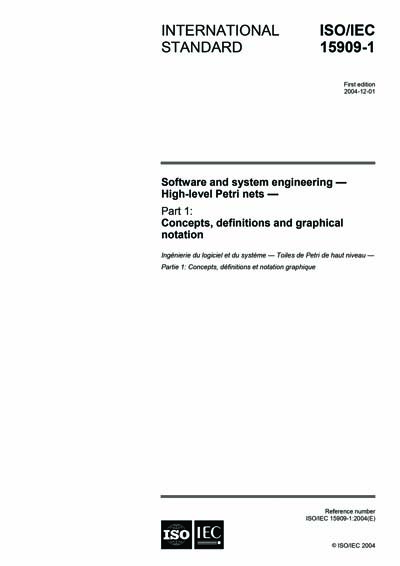Historical
ISO/IEC 15909-1:2004
Software and system engineering - High-level Petri nets - Part 1: Concepts, definitions and graphical notation
ISO/IEC 15909-1:2004 defines a semi-graphical modelling language for the specification, design and analysis of discrete event systems, including software and in particular distributed and parallel systems where concurrency is an important characteristic. The technique, High-level Petri Nets, is mathematically defined and may thus be used to provide unambiguous specifications and descriptions of applications. The graphical nature of the technique allows information, or resource flow, and control flow to be visualised, providing a powerful aid to understanding system behaviour. It is also an executable technique, allowing specification prototypes to be developed to test ideas at the earliest and cheapest opportunity. Specifications written in the technique may be subjected to analysis methods to prove properties about the specifications, before implementation commences, thus saving on testing and maintenance time. The field of application encompasses a wide range of systems from technical systems such as manufacturing, business processes, computer software and hardware, telecommunication networks and signalling systems, defence systems, mechatronics, postal services and avionics to biological and sociotechnical systems.
Content Provider
International Organization for Standardization [iso]






